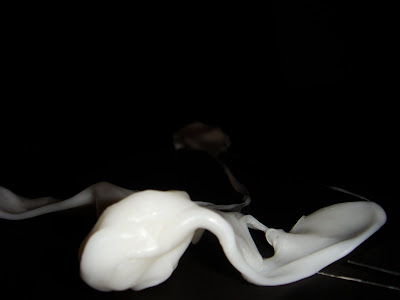by: Neil Spiller
"A building project...has to be substantially completed before construction can begin. In order to live up to these imperatives and yet be capable of innovation, some contemporary architects have sought to collapse "theory" and "practice" in new "algorithmic" processes of design that avoid subjective "judgement" and produce novelty through instrumental mathematical operations. Made possible by powerful computers and ingenious software, the new algorithmic magic creates novelty without love, resulting in short-lived seduction, typically without concern for embodied cultural experience, character, and appropriateness" Alberto Perez Gomez (1) The term "Cyberoque" is probably ten years old. It was predicated on the notion that the new virtual technologies would blow life into architecture and we would head off to a new architecture of billowing surfaces, voluptuous skins and seductive invaginations. Indeed, the formal articulations that are possible to the contemporary architect are much increased, albeit mostly in a familiar series of articulations begat by similar software applications. Much has been sacrificed to this formal necromancy and this includes properly articulated plans, expedient economic structural logics and the exquisite dovetailing of form and programme. Unfortunately all these tropes and trends lead us not to an architectural world of individual liberation, unleashed creativity and empowerment but to a world of ubiquity and a lack of self-critical engagement in the process of design and, most crucially of all, a lacuna of human communication through architecture that engages the human condition in all its myriad complexities and desires. Alberto Perez- Gomez's work is a shining beacon that advocates the erotic, the love-ly and the poetic possibilities of architecture. Most contemporary architects shy away from these exuberant notions and are content to hide like children under corporate skirts.
During the last five years the MArch Architectural Design AVATAR Course has been developing a large and dense series of theoretical projects that address some of the surreal possibilities of the new technologies in response to ideas of individuality, mnemonics, poetics, machinery and the history of art and architecture. We are living in an era of millennial ecstasy, we are now cast forever out of our skins. We are transparent, elsewhere and smeared across our world, our digital or visceral smudge visible and vulnerable. Our new architectures search for an ecstasy of creation, a choreography of chance, the liberation of particularity and a dislocation of the designer self, `I got mine, get yours! in a world where all is possible, the question is begged: Are you doing anything that really needs to be done or are you blinded by the sweet caress of the digital delirium, the warm embrace of the hyper connected, disconnected spectacle? It sucks you dry, adapting to your every action, and growing stronger bit by bit. Now is the time to think differently. All our post-modern desire is good for is an obsession with Apples and BlackBerrys � Digital Fruit. We desire the exceptional, we want to be different, and we want all things to have a special relationship with us. We make our world by desiring within it. We should build our architecture with desire.
![nicolas rodriguez' [self-assembling] blog](http://1.bp.blogspot.com/_4lqqkeRH0Bw/TQfrCk0FLFI/AAAAAAAAAUk/_x8FhqMiMs0/S800/header-1600.jpg)

















